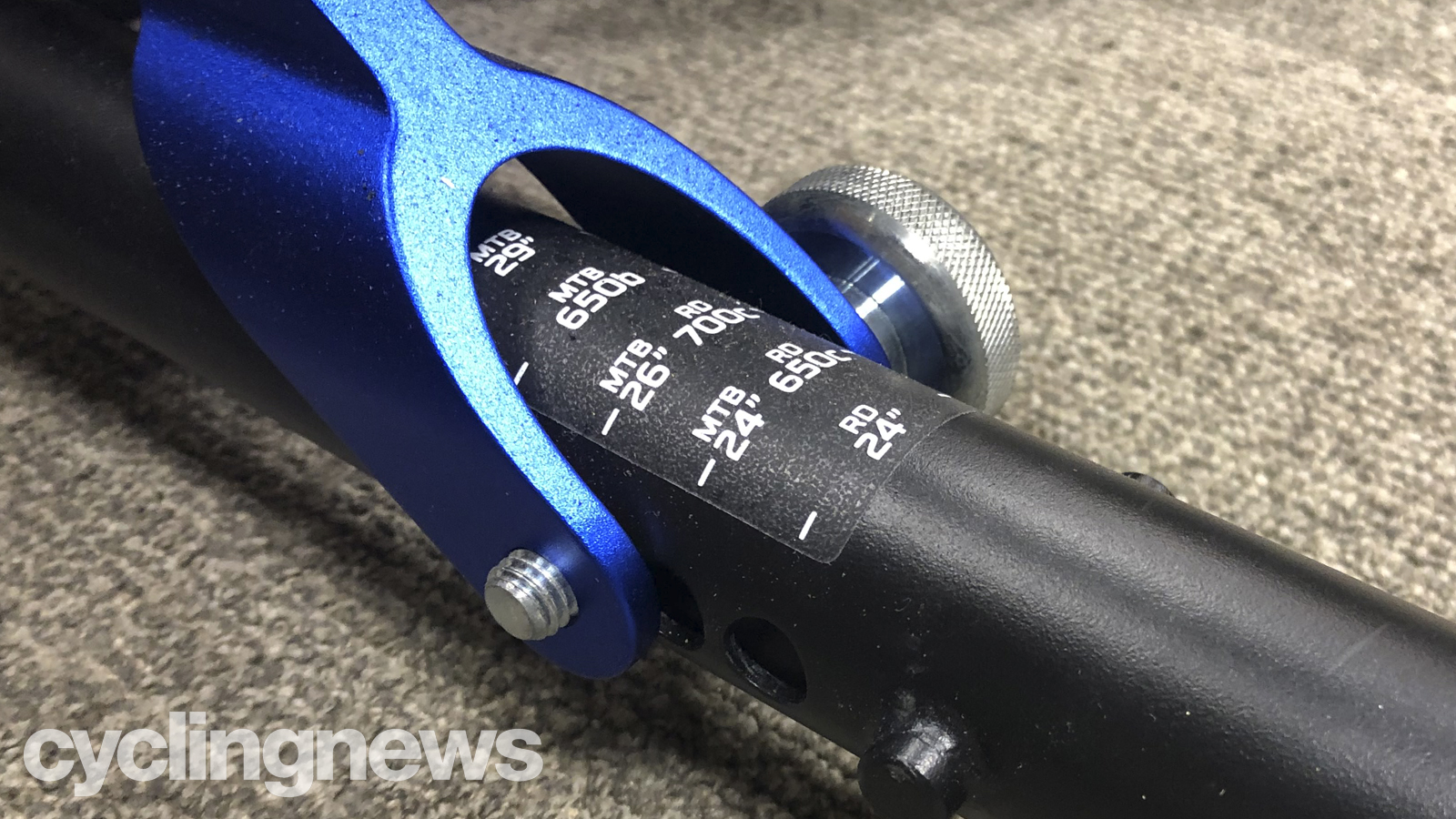Cyclingnews Verdict
The Wahoo Kickr is quiet, easy, accurate and simple - a real complement to anyone's indoor trainer setup
Pros
- +
Quiet in use
- +
Simple setup
- +
Widely compatible
Cons
- -
Premium price
You can trust Cyclingnews
The latest iteration of the Wahoo Kickr has been around a while now, first being launched in 2018, but with solid construction and regular firmware updates, it remains one of the best turbo trainers available today. I've had one in regular use since 2019 and it's still going strong. At £999.99 / US$1199.99 / AU$1699.95 / €1199.99, there are plenty of alternatives out there that undercut the price, even Wahoo's own Kickr Core shaves almost a third off the cost.
The Kickr 2018 has twice been superceded, so if you're interested in the newer iterations, head to our Wahoo Kickr 2020 review for Kickr V5, or our Wahoo Kickr 2022 review for the newest model available.
Here we'll focus on the Kickr 2018. Updates over the former Kickr (V3) were more evolution than revolution. These included a larger flywheel (12lb increased to 16lb) and refined power management, meaning should you stop pedalling while mid-interval in erg mode, you don't need to do a standing track start in order to get the trainer moving again.
The Kickr communicates via both ANT+ & Bluetooth Smart, and the software compatibility list is so long that you're generally safe to assume that, whatever app you're considering using for your indoor cycling needs, the Wahoo Kickr will support it.
Features
Two key features, in our opinion, are the simple set up and the power responsiveness. The Wahoo app has an intuitive set-up process for all of its products, and once the Kickr was paired, it wasn't long before I was pedalling away.
The speed of the Kickr's responsiveness is what sets it apart from other trainers we've tested. The Kickr has long been renowned for being quick, and it's impressively quick to respond to changes in incline or changes in an interval session.
This is noticeable while riding, and makes for a less mentally taxing effort, especially during long steady-state intervals where you can allow erg-mode to dictate the wattage, and let distractions such as Netflix help the time pass.
Design
The Kickr uses a foldable three-leg base with adjustable feet for stability. A third adjustment option offers preset heights based on your bike's wheel and tyre size, which takes the guesswork out of height adjustment. Paired with the Climb, adjusting your settings in the app will raise-or-lower the bike's front end, ensuring the 0 per cent gradient has you riding level.

Unlike the cheaper Kickr Core and many other brands, the Kickr comes complete with a cassette installed. It's 11-speed by default, but can be swapped easily, although Campagnolo users will have to purchase a separate freehub adaptor. There's also a range of axle adaptors included in the box, including 130/135 QR, 142x12 and 148x12 thru-axle.
The one downside to the design of the Kickr, most-noticeable when also using the Kickr Headwind, is the length of the power cable. If your power source is on the wall in front of you, the Kickr's distance from the wall is limited by the cable length. This in turn means the Headwind is situated too close to the front of your bike, and airflow is directed at your legs, rather than your body. It's a small flaw, but given Wahoo designed them to work together, it seems a pretty sizeable oversight. It can be overcome with the help of an extension lead, but at this money, you shouldn't have to make accommodations.
Differences to Kickr Core
Besides the price disparity, there are a few substantial differences between the Kickr and the Kickr Core. The flywheel of the Kickr is 16lb, whereas the Core is the same 12lb weight as the previous generation Kickr.
The maximum resistance of the Kickr is 2200 watts, versus a probably-still-out-of-reach 1800 watts on the Core. Gradient simulation is also greater, rising from 16% on the Core to 20% on the Kickr.
The structure of the Kickr folds and has a carry handle, whereas the Core does not, and the Core doesn't come with a cassette.

Verdict
The Wahoo Kickr is a great indoor trainer, and if you choose to invest your hard-earned cash, you'll be far from disappointed. It’s easy to set up, it's almost silent, and it's compatible with every app imaginable. The accuracy and responsiveness are both great and the flywheel, at 16lbs, helps to offer lifelike road feel.
However, is it worth the price difference to the Kickr Core? For me, probably not, but it depends on how much value you place in those differences.

Josh is Associate Editor of Cyclingnews – leading our content on the best bikes, kit and the latest breaking tech stories from the pro peloton. He has been with us since the summer of 2019 and throughout that time he's covered everything from buyer's guides and deals to the latest tech news and reviews.
On the bike, Josh has been riding and racing for over 15 years. He started out racing cross country in his teens back when 26-inch wheels and triple chainsets were still mainstream, but he found favour in road racing in his early 20s, racing at a local and national level for Somerset-based Team Tor 2000. These days he rides indoors for convenience and fitness, and outdoors for fun on road, gravel, 'cross and cross-country bikes, the latter usually with his two dogs in tow.
